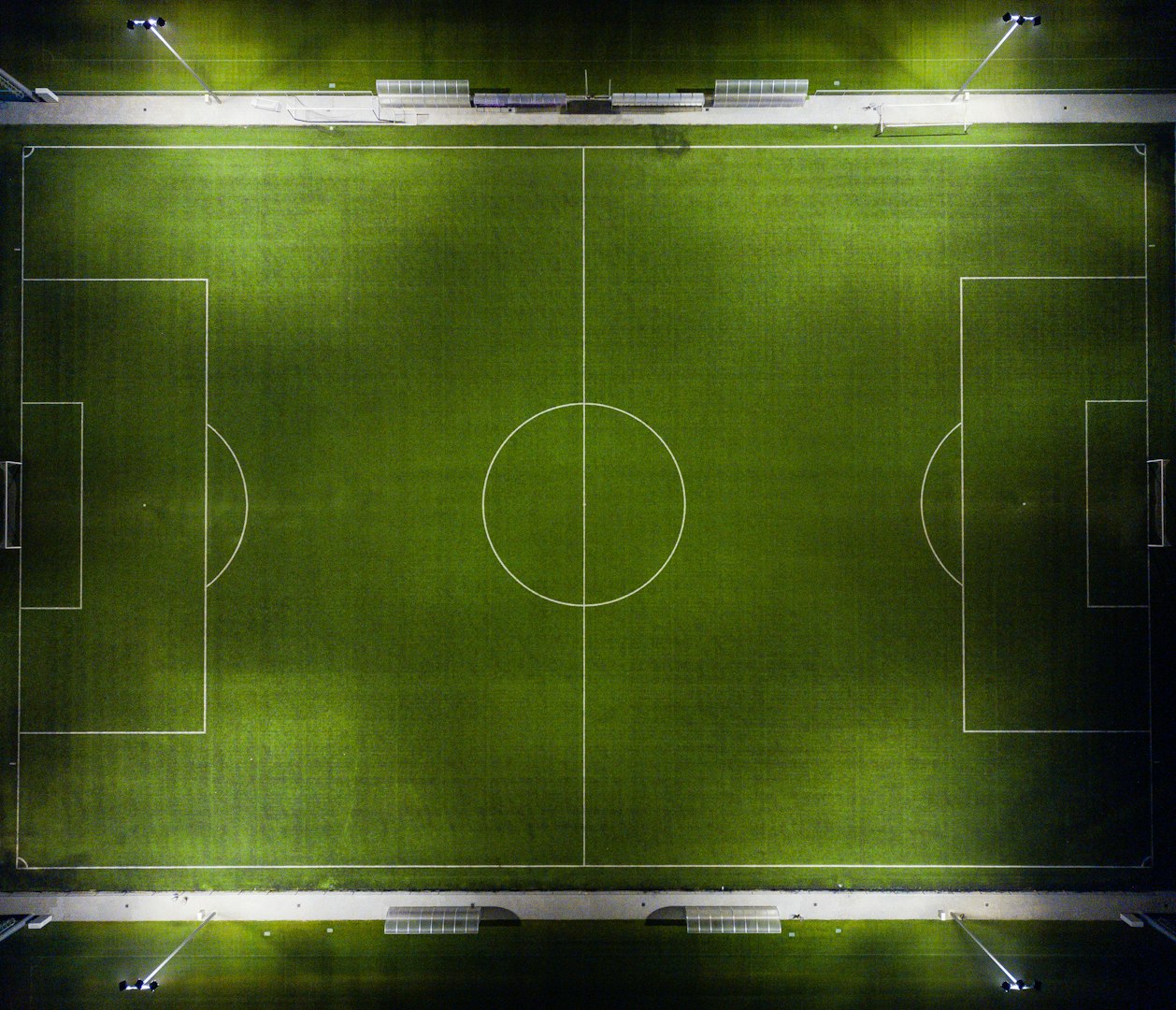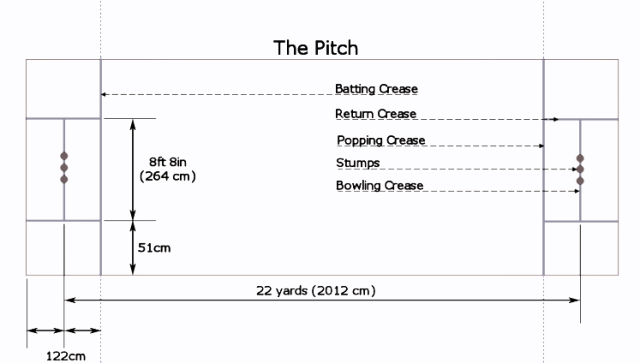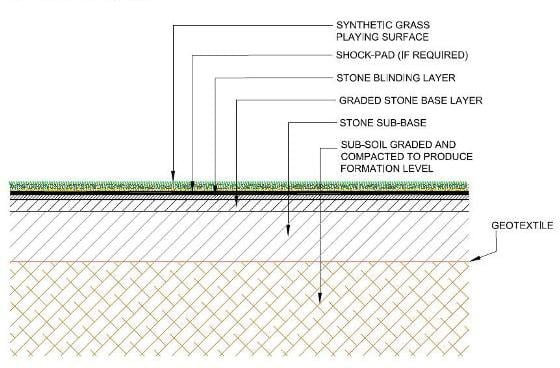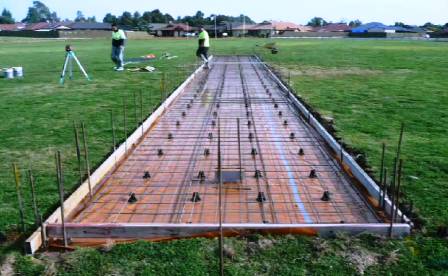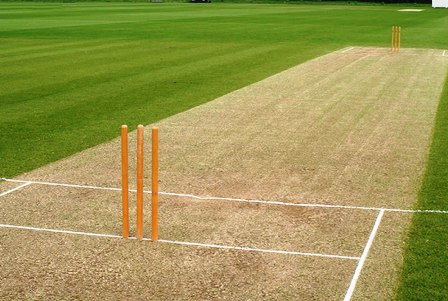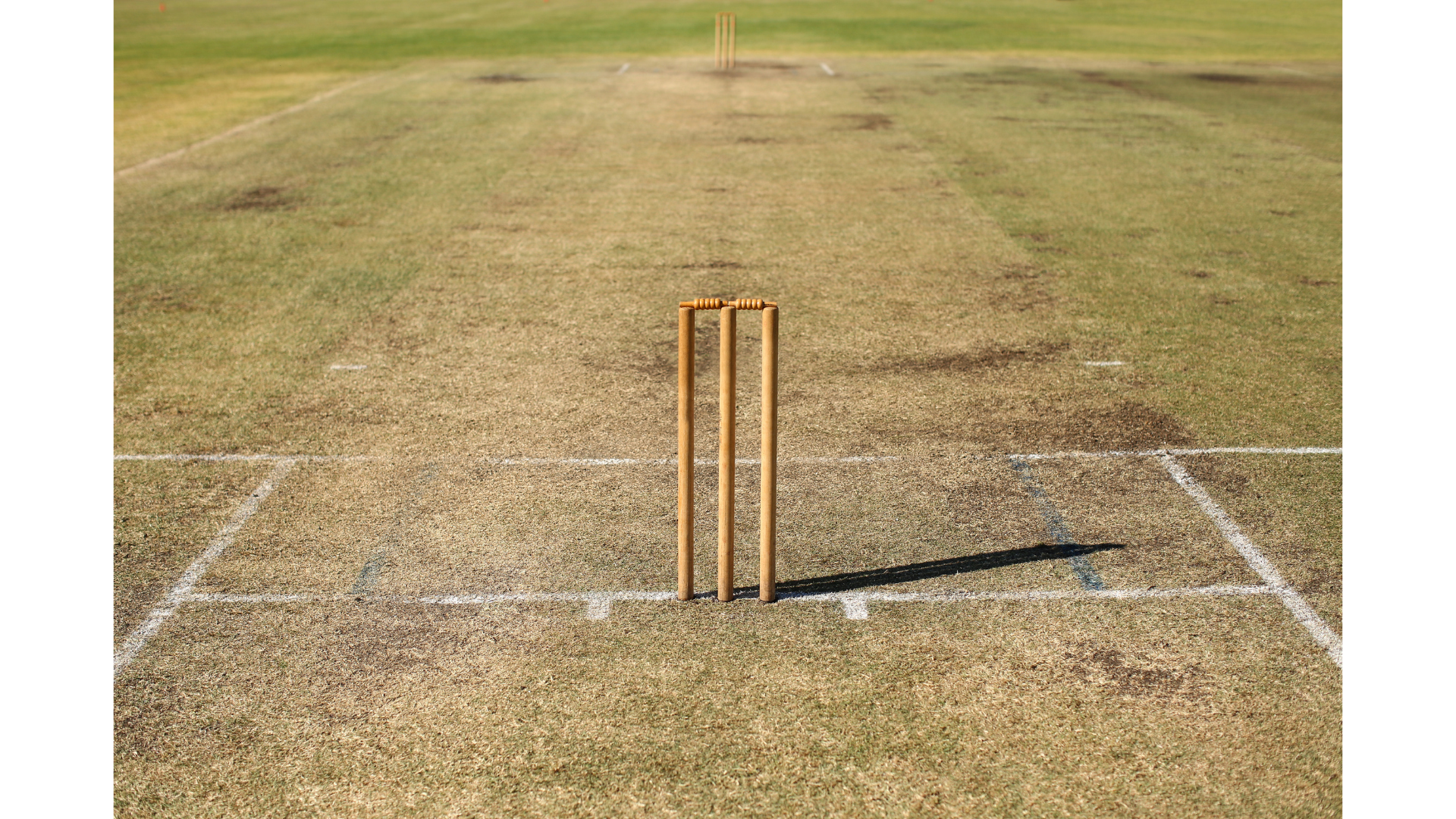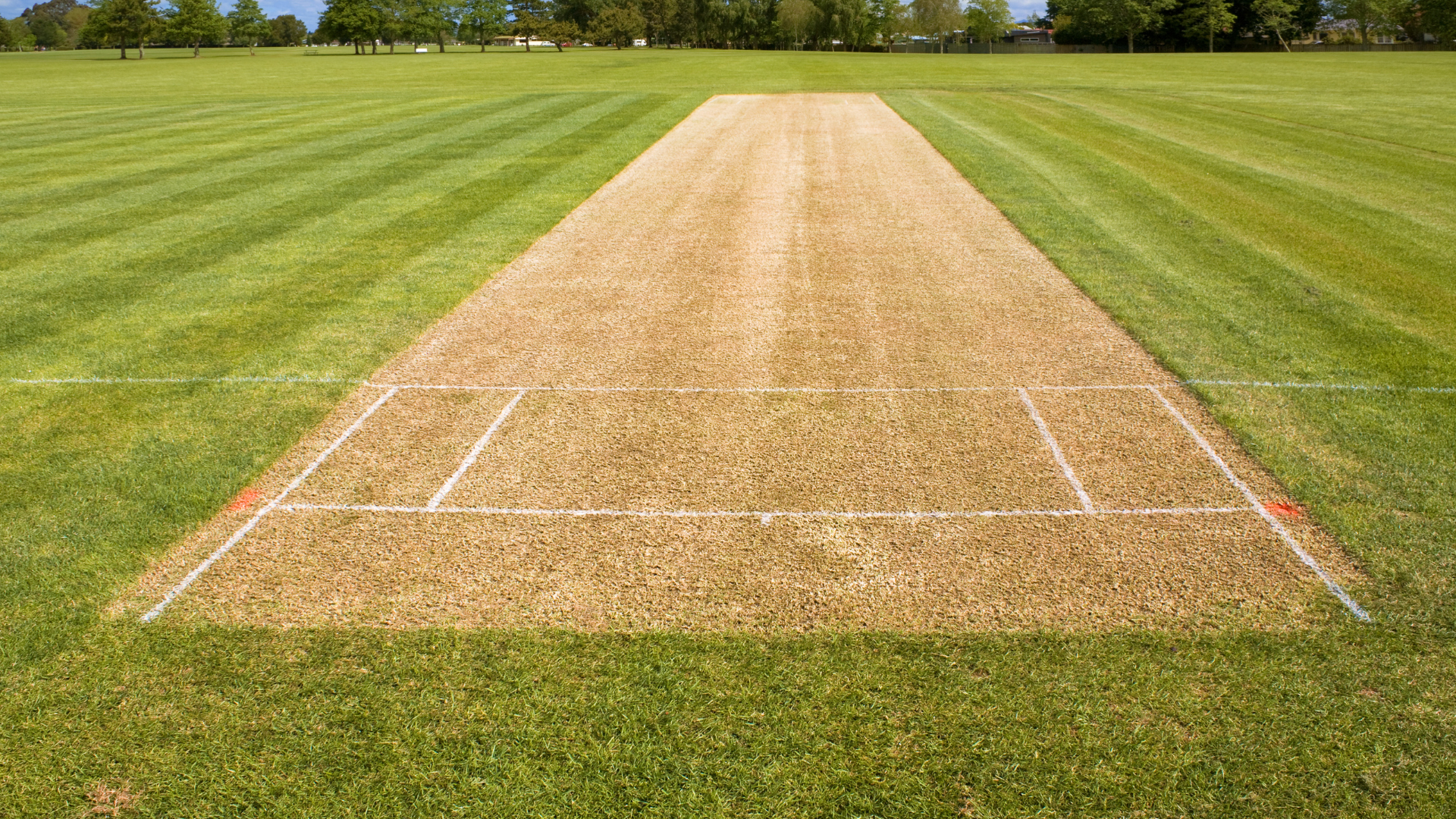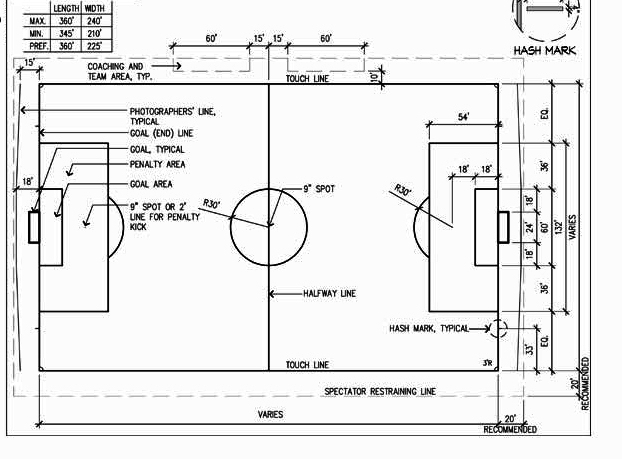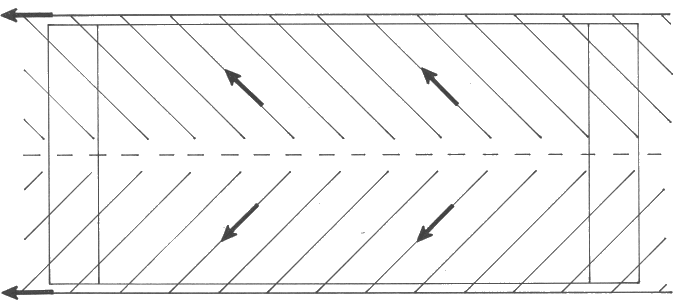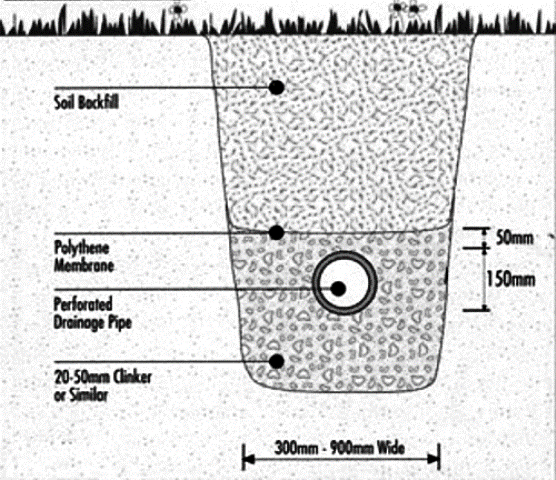For one-day pitches or school fields, the need for a coarse gravel layer and clay loam layer may be waived if the underlying material is well-drained with less than 25% clay content.
Prior to laying the bulli, it should be air-dried and rolled on a firm surface, such as a car park, to achieve uniform particle size and remove stones, roots, and other debris—avoid sieving the bulli.
Add a 100mm layer of appropriately fertilized bulli and compact it in a dry state using a roller or vibrator, scoring the surface.
Complete the construction by gradually infilling the surface with bulli layers, each not exceeding 100mm in thickness. After each addition, compact the bulli and score its surface before adding any further material.
It is strongly advised to mix the initial fertilizer application, particularly bonemeal and phosphate, with the bulli before filling. Due to the varying soil conditions, no specific fertilizer program can be provided here; recommendations should be tailored to the results of soil tests.
Choosing the right turf grass is crucial for a cricket field:
For warm seasons, consider Bermuda Latitude 36, Seashore Paspalum, Sunday Ultra Dwarf, etc.
For winter seasons, options like Perennial Ryegrass, Creeping Bentgrass, Kentucky Bluegrass, and Kikuyu are suitable.
Grass establishment
Establishing the grass involves thoroughly soaking the entire area before planting, ensuring all low spots and uneven areas are filled. Plant the grass, whether it's Skaapplaas or Bayview, only when the surface is dry enough to walk on without clay sticking to your shoes.
There are two methods for planting the grass:
(a) Grass sods are rinsed and separated into individual sprigs, which are then laid on the scored bulli surface. The entire sprig-covered area is thoroughly wetted, followed by a careful spreading of a thin (10mm) layer of fine bulli over the sprigs.
(b) Alternatively, grass plugs can be planted in hollow-tine holes with slightly moist bulli, spacing the plugs about 75mm apart.
Ensure the planted area is watered at least once a day using a fine nozzle sprayer until signs of sprouting appear. Daily watering should persist until the grass covers at least 75% of the area. A light dressing of dry bulli can then be evenly spread over the pitch and leveled with a straight edge.
